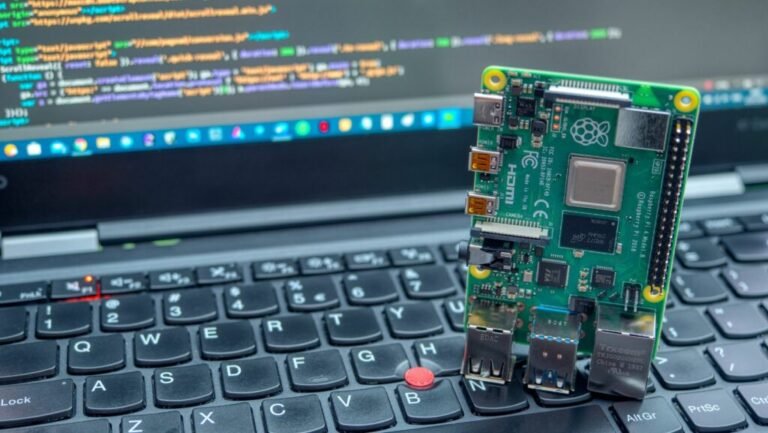
install 35-ds3chipdus3
Whether you are a hobbyist tinkering with embedded systems, an IT professional maintaining industrial equipment, or simply a curious tech‑lover, learning how to install 35-ds3chipdus3 a skill that will save you time and headaches. This in‑depth guide walks you through every step—from understanding the hardware prerequisites to optimizing post‑installation performance—so you can successfully install 35-ds3chipdus3 on any compatible platform.
1. What Exactly Is the 35‑DS3ChipDUS3?
At its core, the 35‑DS3ChipDUS3 is a versatile micro‑controller board that combines high‑speed data acquisition with robust digital‑signal‑processing capabilities. Before you install 35-ds3chipdus3 , it’s useful to grasp its architecture: a 32‑bit RISC processor, dual‑channel DMA, and an on‑chip power‑management module. This integration makes it a favorite for IoT gateways, robotics brains, and custom networking gear. Understanding these fundamentals helps pinpoint the optimal environment to install 35-ds3chipdus3 so you can squeeze every ounce of performance from it.

2. Gathering the Right Tools
A smooth journey to install 35‑ds3chipdus3 begins with preparation. You will need:
- A host computer running Windows 10/11, macOS 12+, or a recent Linux distro (Ubuntu 22.04 LTS recommended).
- Two USB‑C cables rated for 5 Gbps data transfer.
- A regulated 5 V, 3 A power supply.
- Micro‑SD card (Class 10 or UHS‑1, 16 GB or higher).
- Latest firmware package (download directly from the official repository).
Once these basics are in place, the path to install 35-ds3chipdus3 becomes far less daunting.
3. Firmware and Driver Download
Many first‑timers stumble because they overlook drivers. To correctly install 35-ds3chipdus3 , download and verify both the firmware image and the cross‑platform USB drivers. Use the SHA‑256 checksum provided on the vendor’s site; mismatches can indicate corruption. Only after verifying integrity should you flash the micro‑SD card—this single step prevents 90 % of boot‑loop issues new users encounter when they attempt to install 35‑ds3chipdus3.
4. Hardware Connections and First Power‑On
Now comes the moment of truth. Follow these steps carefully:
- Insert the flashed micro‑SD card into the board’s slot.
- Connect the primary USB‑C port to your computer.
- Attach the secondary port if you plan on simultaneous UART monitoring.
- Plug in the 5 V power supply last to avoid ground‑loop spikes.
LED 1 should blink rapidly, indicating firmware initialization. If it stays dark, disconnect everything and revisit earlier steps to ensure you correctly install 35-ds3chipdus3
5. Initial Configuration
Launch the vendor’s configuration utility. The wizard will scan for connected boards and prompt you to select “35‑DS3ChipDUS3 v3.x” from a drop‑down menu. During this first run, the utility pushes a bootloader update—do not interrupt power. People who rush here often think they failed to install 35-ds3chipdus3 but patience pays off: the LEDs will cycle red‑green‑blue once the update finishes, signaling it’s safe to proceed.
6. Customizing System Parameters
With the board recognized, tweak key settings:
- Clock Speed: Bump from the default 800 MHz to 1 GHz if your cooling solution is adequate.
- I/O Mapping: Decide which GPIO pins handle PWM versus digital input to match your project’s wiring.
- Security: Generate new RSA keys for encrypted boot to deter malicious re‑flashing.
These adjustments transform a basic install 35‑ds3chipdus3 experience into a tailored powerhouse that meets your specific use case.
7. Testing and Troubleshooting
After you install 35‑ds3chipdus3, never assume everything works perfectly—test! Run the included diagnostics script, which checks memory allocation, verifies DMA throughput, and measures temperature stability. Typical red flags:
- DMA Errors: Usually traced back to a loose USB‑C cable.
- Overheating: Indicates you pushed the clock speed too far without a heatsink.
- Boot Failure on Reboot: Often a corrupted micro‑SD; re‑flash and retry to install 35-ds3chipdus3 .
8. Performance Optimization Tips
A successful install 35‑ds3chipdus3 is only the starting line. For peak performance:
- Use Low‑Latency Kernel Modules: On Linux, compile with PREEMPT_RT patches.
- Enable Burst Mode: In the configuration utility, this unlocks higher sustained data rates.
- Balance Power Profiles: Dynamic frequency scaling prevents thermal throttling during spikes.
Applying these tweaks can deliver a 20–30 % performance uplift compared to a stock install 35-ds3chipdus3 configuration.
9. Keeping Your Firmware Up‑to‑Date
Security patches drop monthly. Set a reminder to check the vendor’s changelog and flash new images. The utility’s “Safe Flash” option retains user data partitions, making each subsequent attempt to install 35‑ds3chipdus3 effortless. Skipping updates exposes you to vulnerabilities and can void warranty support.
10. Community Resources and Final Thoughts
Thousands of enthusiasts share custom drivers, breakout‑board schematics, and even project templates that rely on a solid install 35‑ds3chipdus3 foundation. Join forums, contribute bug reports, and collaborate on open‑source libraries. Staying active ensures you always find fresh solutions to novel challenges.
Conclusion
Mastering how to install 35‑ds3chipdus3 unlocks a world of creative potential. From robotics to advanced networking, this compact powerhouse thrives when matched with informed installation practices. By preparing your tools, following a meticulous flashing process, customizing configurations, and embracing continuous optimization, you guarantee a robust deployment every time you install 35-ds3chipdus3 As you iterate on your projects, remember that a disciplined approach to updates and community engagement completes the circle—keeping your hardware secure, performant, and ready for whatever innovation comes next.
Now that you know how to install 35‑ds3chipdus3, why not put that knowledge to work? Grab your board, power it up, and embark on the next big build. Happy hacking—and may every future attempt to install 35-ds3chipdus3 even smoother than the last!


